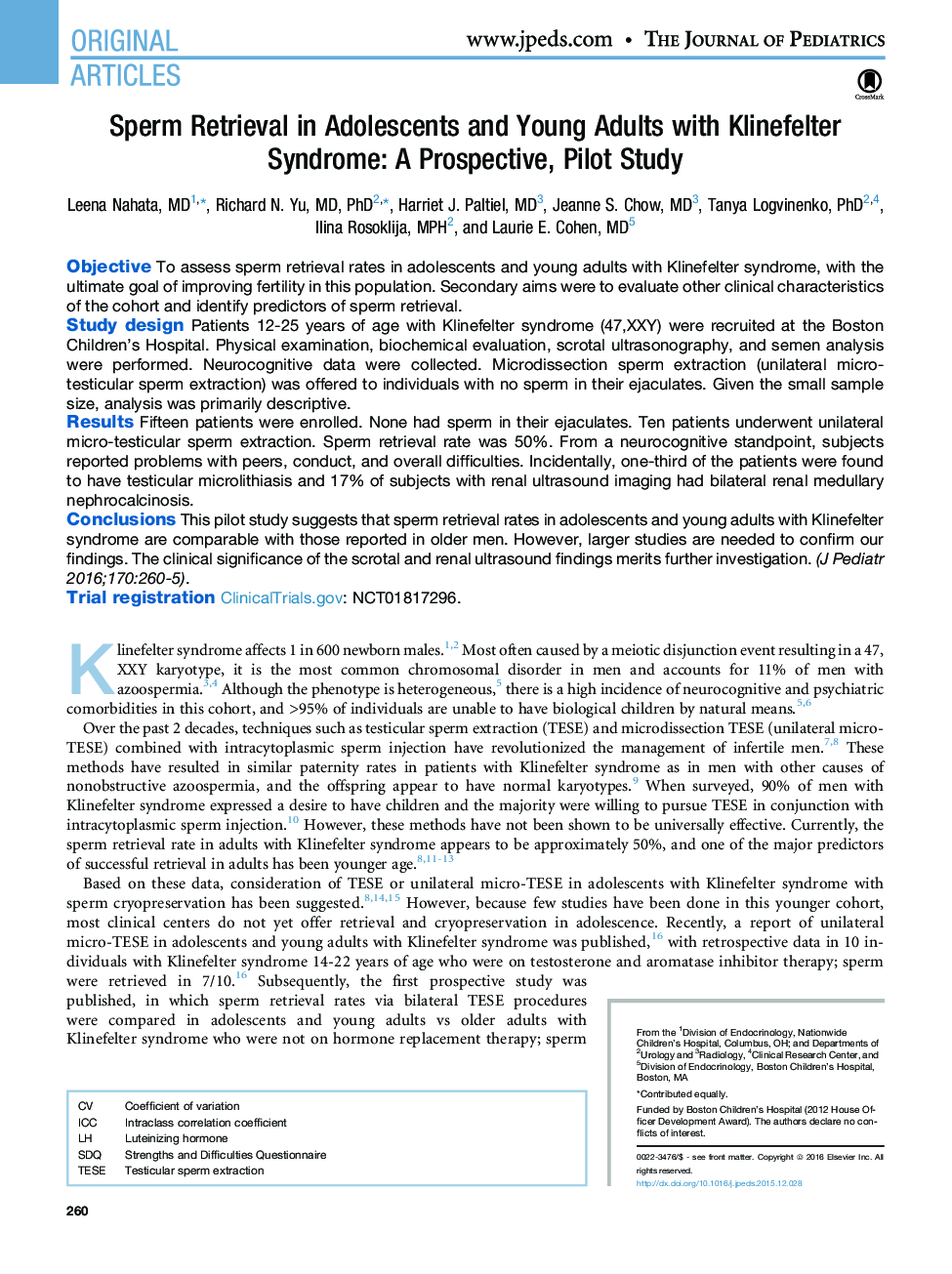| Article ID | Journal | Published Year | Pages | File Type |
|---|---|---|---|---|
| 6219157 | The Journal of Pediatrics | 2016 | 8 Pages |
ObjectiveTo assess sperm retrieval rates in adolescents and young adults with Klinefelter syndrome, with the ultimate goal of improving fertility in this population. Secondary aims were to evaluate other clinical characteristics of the cohort and identify predictors of sperm retrieval.Study designPatients 12-25Â years of age with Klinefelter syndrome (47,XXY) were recruited at the Boston Children's Hospital. Physical examination, biochemical evaluation, scrotal ultrasonography, and semen analysis were performed. Neurocognitive data were collected. Microdissection sperm extraction (unilateral micro-testicular sperm extraction) was offered to individuals with no sperm in their ejaculates. Given the small sample size, analysis was primarily descriptive.ResultsFifteen patients were enrolled. None had sperm in their ejaculates. Ten patients underwent unilateral micro-testicular sperm extraction. Sperm retrieval rate was 50%. From a neurocognitive standpoint, subjects reported problems with peers, conduct, and overall difficulties. Incidentally, one-third of the patients were found to have testicular microlithiasis and 17% of subjects with renal ultrasound imaging had bilateral renal medullary nephrocalcinosis.ConclusionsThis pilot study suggests that sperm retrieval rates in adolescents and young adults with Klinefelter syndrome are comparable with those reported in older men. However, larger studies are needed to confirm our findings. The clinical significance of the scrotal and renal ultrasound findings merits further investigation.Trial registrationClinicalTrials.gov: NCT01817296.
